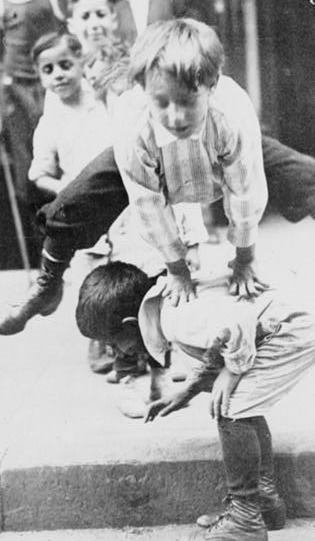 3 parts white portland cement 1 part hydrated lime mix until plastic. hose the brick liberally before applying so it does'nt suck the moisture out of the wash. Apply with 8" mason's brush. Mix enough in a wash tub to apply, and then mix again as needed.
3 parts white portland cement 1 part hydrated lime mix until plastic. hose the brick liberally before applying so it does'nt suck the moisture out of the wash. Apply with 8" mason's brush. Mix enough in a wash tub to apply, and then mix again as needed. It is a learned skill by stucco mechanics, but I have spent only an hour or two with them until they get it right. The painters bid to apply paint was over $20,000, The stucco sub did the job for less than $4000 with two men. The material cost for less than $100 for the entire house. This house was a renovation and redesign of the front facade. The red common brick could never be matched to the existing red common brick and the white wash gave the house a real presence it did not have originally.After:

^That recipe sounds very high in the cement ratio.
This is an Historic Whitewash Formula that I have spec’d. I have no clue why it includes molasses, but it does. Other recipes use ingredients like ground rice.
This recipe has two parts that are made separately and then mixed together, after they have cured for 12 hours. The ingredients are:
Part 1
Salt
Alum - Common Potash Aluminum
Molasses - Unsulfured, light brown/clear
Water
Part 2
White or Ivory Lime
Portland Cement
Hot Water
Part A: Mix 12 pounds salt, 6 ounces of alum and 1 quart molasses dissolved in 1.5 gallons of water.
Part B: Mix 45 pounds of lime and 5 pounds of cement with 5 gallons of hot water. Let this stand for 12 hours. After 12 hours mix Parts A and B together. It should have a brushable consistency.
Very important is to wet down all brick surfaces liberally before applying the white wash. You want the brick to have absorbed enough water so that the brick doesn't draw the water out of the white wash. It can be brushed on thick or thin, depending on the desired effect. My preference is to apply it thick and then wash it down after it has started to set. This thins the coating so that the brick shows through more. Working the hose creatively can create a natural wear pattern, which is too hard to accomplish with a brush, usually ending up looking too intentional. They say that white wash can be tinted, but I have never tried it.
Normally, the image of this is white wash on red brick. We used it on an awful yellow brick and the look was charming. Much better than painting brick, which can create all kinds of maintenance challenges.
Gravel Road base stabilised with cement, hydrated lime(my preference) or plant or synthetic polymers. You can also stabilise dirt roads with lime: When I have treated my clay road , I have used 50 # bags - about 1 every 20 feet or so. First cut open the road. Then using the bags, I place the bags along the road, then cut them open and carefully spread the very dry, fine powder across the road. (No Wind Day !) Then mix with a tiller, or disc, several times. You may have to add water, as the clay will dry out very quickly. After mixing, make sure you have sufficient moisture so you can clump the material together in your hand. Ideally one should then compact with roller, or vehicle tires, and keep damp for several days if possible. The chemical reaction will make a cement out of the clay. Handling the material in bulk form with a shovel would be terrible tourture to yourself..way too dusty. A dustless way, is to make a slurry out of the lime. 1 ton of lime to 500 gallons of water, makes 600 gallons of 30% lime slurry. Now apply the lime slurry to the clay, and behold: applying lime slurry to wet clay, dries up the clay, and makes a cement. Now, you still must mix - tiller or disc - and compact. As you mix, the clay will dry rapidly to a fairly constant moisture level, and become friable. Now shape, and compact, by rollers or vehicle tires. Keep damp for several days if possible...Hydrated Lime has been used for decades on air strips and roads for stabilizing it. 2-6% hydrated lime, tilled into the soil will make it impervious to rain/ heave/ swell, and can be done once you dig the footer/footprint for your cob house. www.lime.org and search for the documents below:
http://www.dirtcheapbuilder.com/arbu1.html
http://www.earthpigments.com/products/index.cfm?Product_ID=122&SubCat_ID=13
http://www.buildingconservation.com/articles/lwdistempers/lwdistempers.htm
Glitsa Floor Finish:
It's a floor finishing system... traditionally solvent born precatalyzed
and stinks to high heaven when curing. The solvents include alcohols, MEK, formaldehyde, etc, so no, it probably isn't 'natural' by your definition... but it produces a hard durable surface that can be re-coated if lightly abused every few (5+) years. The sealer sinks into the wood (typically mopped on) hardening the top layer of the wood and preparing it for the final finishes. General maintenance is cloth dampened with water.
I am unfamiliar and haven't yet used the Glitsa waterborne finishes... but as wood is non-polar and water polar, the grain raises with water. That's why I use a solvent born primer before latex coating for interior trim, Waterborne may be ready for prime time now... but other interior finish products don't meet that test yet..






